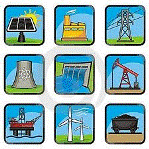Department of Agricultural Economics: Undergraduate Research

Op-Eds from ENSC230 Energy and the Environment: Economics and Policies
Date of this Version
Fall 12-23-2017
Document Type
Article
Citation
Op-Ed from ENSC 230. Energy and the Environment: Economics and Policy, University of Nebraska-Lincoln, Department of Agricultural Economics, Fall 2017
Abstract
The purpose of both a cap and trade agreement and a carbon tax is to reduce emissions by setting a price on carbon. However, that is where the similarities end.
A cap and trade agreement gives a certain amount of allowances to each company that adds up to an emissions cap, allows companies to trade them. Companies only pay for carbon emissions if they produce more than the amount of allowances they are given, either by paying penalties to the government, or by buying more allowances from other companies. This creates a market for allowances, and based on demand, sets a price on them.
A carbon tax forces companies to immediately pay a certain amount per unit of carbon dioxide emitted.
A cap and trade agreement, in theory, puts a cap on the amount of carbon emitted. None will be emitted above this quantity. In the real world, if the penalties for exceeding allowances are too low then it would be cheaper to pay the penalty than to lower emissions. The same applies to a carbon tax, as if the tax is too low then companies would rather pay it than innovate. Lobbying by the affected interests could certainly ensure this happens.
These shortcomings can be overcome by increasing the quantity of the penalties. If it becomes more expensive to pay the penalty than to reduce emissions or buy more allowances, then the cap will be met. If the tax is increased to the right level as well, it will be far more expensive to pay it than to change.
A cap and trade agreement is far more complicated than a carbon tax. The cap must be researched, the allowances divided up, and laws passed to ensure that companies comply.
A carbon tax simply needs to be researched, made into law, and enforced. Emissions in both cases will need to be measured, and but due to the lack of an allowance system, a carbon tax requires slightly less bureaucracy. The penalties for noncompliance in both cases will cost time, money, and manpower to enforce.
Prices for the carbon tax will not fluctuate with the market. If the price of abating emissions increases, companies will emit more and pay the tax until it increases. Given the gridlock in Washington, it could take a long time for that increase to occur.
In a cap and trade situation, prices can fluctuate with the market. If abatement costs increase for one company, they can buy more allowances from a more efficient company. The cost, though higher than before, will still be lower than the punishment for emitting without them. As long as the more efficient company abates, more carbon is not emitted.
However, money from a carbon tax can be used to invest in green technologies, increasing social benefit. The money from taxing carbon emissions from coal plants, for example, can be given to other companies as subsidies for wind power. A constant price also encourages investors to put capital toward greener technology, as they know when it will be cheaper due to the tax.
However, selling the idea of a carbon tax to federal lawmakers will be very difficult. A tax on carbon not abated will cost companies far more than simply buying more allowances would have companies in a different policy. Carbon emitters and fossil fuel producers have some of the biggest campaign donations to politicians in Washington, and their lobbyists constantly ply them with gifts. Though the tax may be better for society, a cap and trade policy will be easier to sell.
The difficulty of a carbon tax is not a terrible thing. Cap and trade policies are good for more innovative companies. When it is very expensive for one company to abate emissions, and very cheap for a different company to do the same, they can reach an agreement. Allowances will be sold between the abatement costs of the two. The more efficient company will make money from selling allowances to the other, who loses money buying them. This allows more innovative companies to grow and prosper, while dinosaurs are left behind.
The United States desperately need to do something to reduce emissions in order to prevent global catastrophe, and a federal cap and trade policy is the best way we, as a country, can do.
Included in
Environmental Indicators and Impact Assessment Commons, Natural Resources and Conservation Commons, Oil, Gas, and Energy Commons, Other Environmental Sciences Commons

